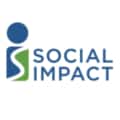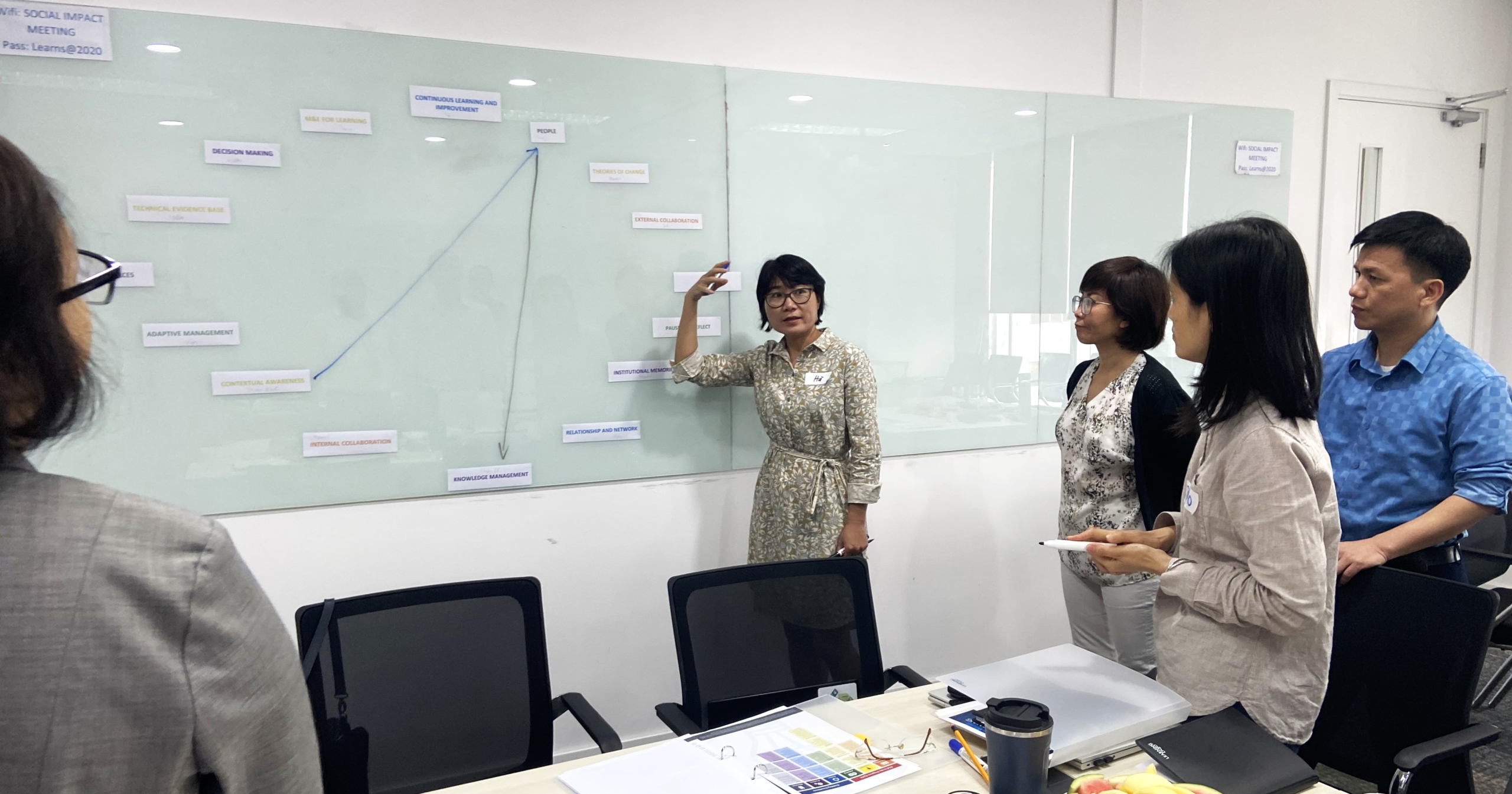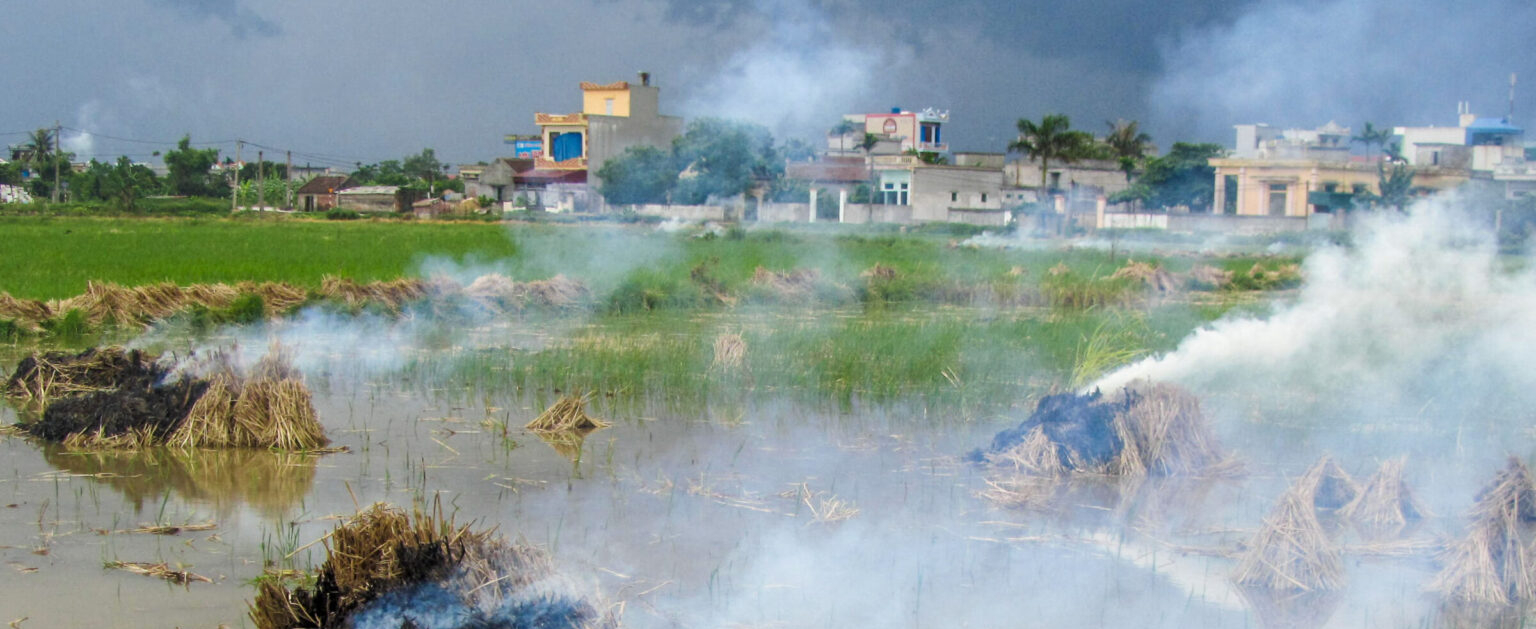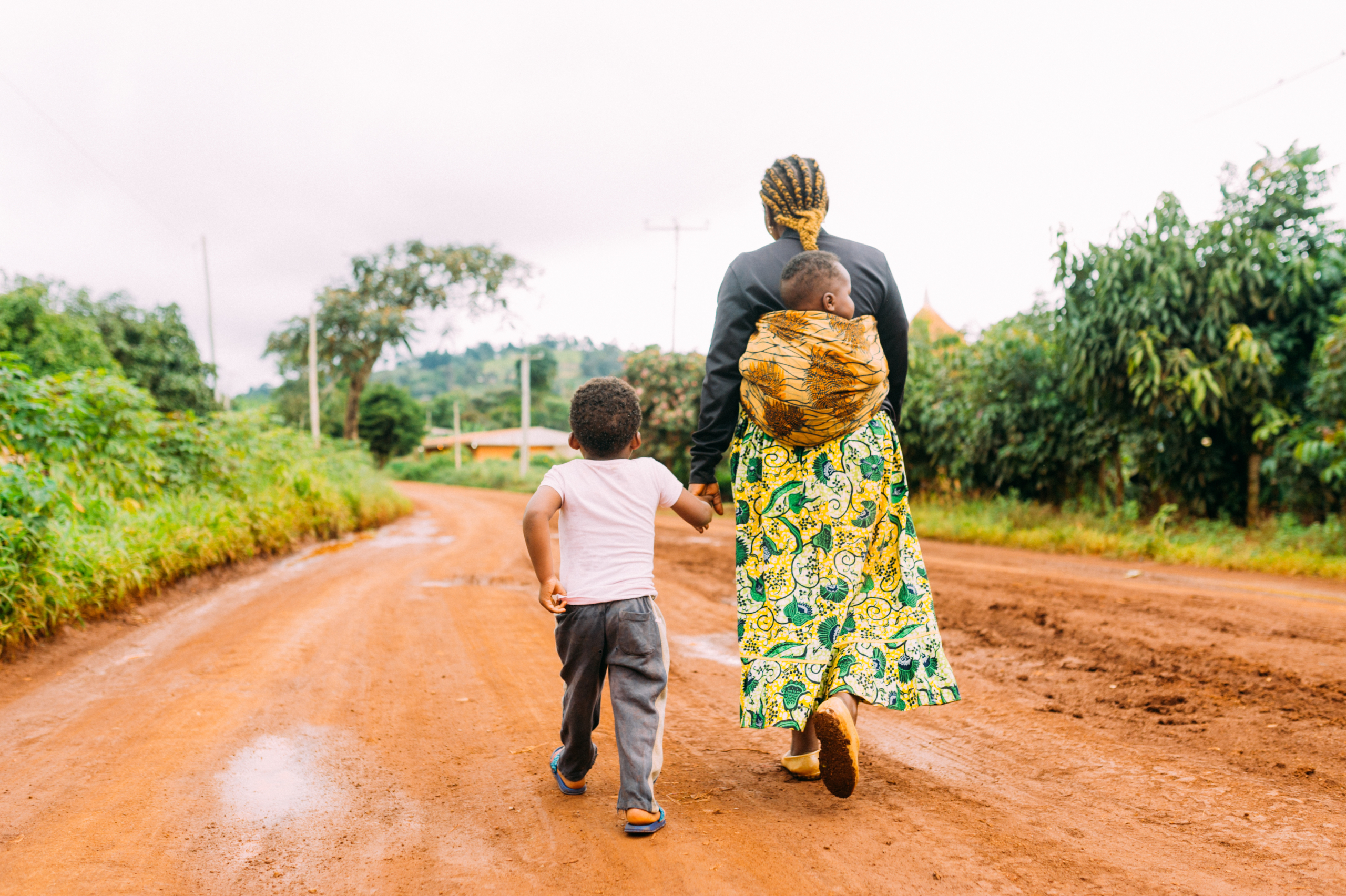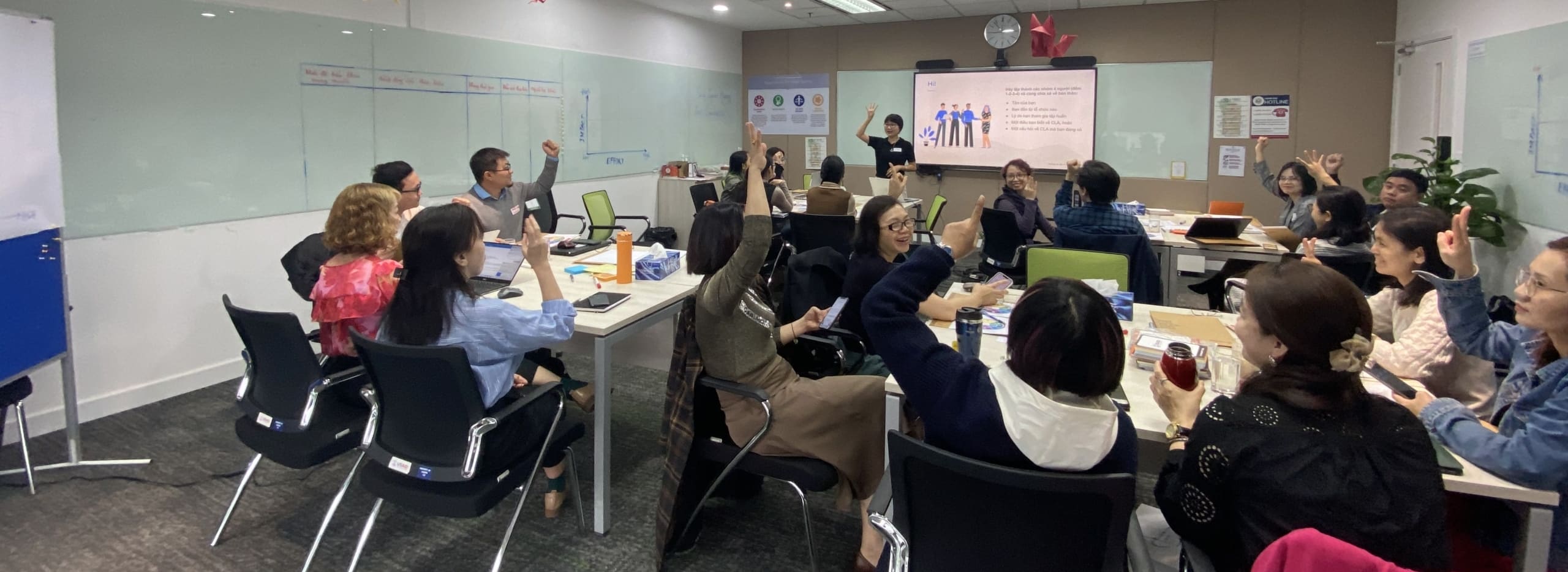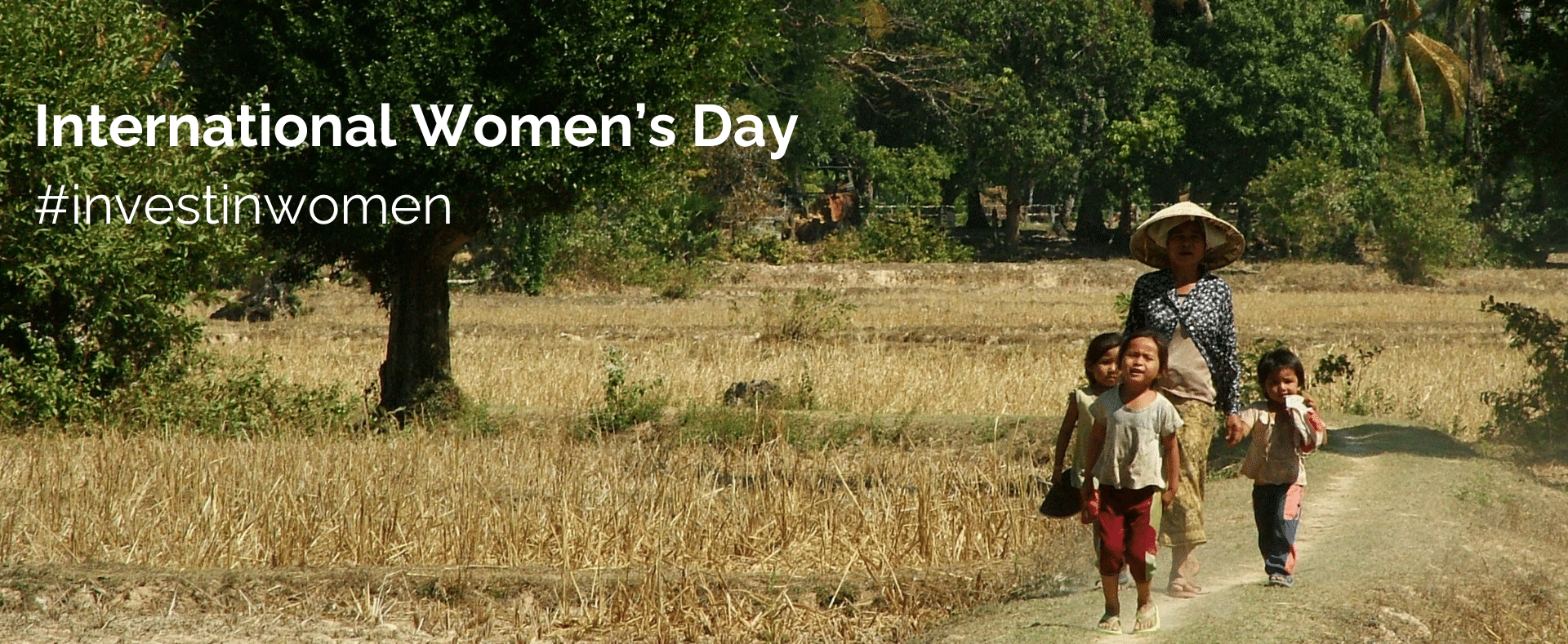The ecosystem of international development is vast and complex, not unlike the global development and humanitarian challenges it is attempting to address. Although women have faced significant barriers in reaching leadership ranks in any sector in the United States, we do see significant achievements in reaching gender parity at the highest levels in the US global development sector. In our BRIDGE 2.0 survey (2023), we find high rates of women in leadership roles – 53% of CEOs are women within the US global development sector, and 55% of leadership staff are also women. Comparing this US-centric data to that of multilateral development agencies, we see lower rates of women in leadership. A GWL Voices survey (2024) that looks at leaders from 54 of the most prominent multilateral agencies including the International Monetary Fund, the UN, the World Bank, and the World Health Organization shows that in 2024, 41% of the heads of organizations were women and that the average share of women in senior management teams is 42%. While the share of women in leadership roles in these organizations is lower than in US-based development organizations, the report notes a rapid increase in recent years toward gender parity.
However, all is not so well when we apply an intersectional lens to data on women in development in the U.S. Specifically, when we look at the nexus of gender and race at the CEO-level staff in the BRIDGE 2.0 report, we see that only 8% of CEOs in the US global development sector are black, indigenous, and other people of color (BIPOC) women, even though more than half of all CEOs in the sector are women. And, when we look at the share of BIPOC women members of management teams, we see that they account for only 19% of teams who identified having BIPOC and women members in the first place. It is quite clear when we juxtapose these data that while the sector has achieved gender parity in leadership, it is far from achieving racial equity in the corridors of power.
This data should make us think critically about the underlying foundations of the international development industry that BIPOC staff navigate. What is the workplace culture of this industry? Does the workplace environment set BIPOC staff up for growth into leadership and CEO roles in the first place? Recent evidence suggests there is much room for improvement. For example, a 2020 global survey analyzed almost 300 development workers across 63 countries and found that 50% of BIPOC respondents had experienced racism at work, ranging from racist comments, pay disparities, and having their contributions overlooked. Another survey (2020) conducted across 150 international development organizations, found that high levels of racism have kept individuals from entering or staying in the industry. More specifically, women of color reported barriers to recruitment, encountering stereotypes, feeling marginalized, having limited access to mentors, and being marginalized in the workplace. Lastly, a 2020 Racial Equity Index survey found workplace culture and leadership to be respondents’ two most frequently mentioned indicators of racial inequity in the industry.
Against this backdrop, what can organizations do? To be credible development practitioners, both donors and implementing partners, must address these inequalities in their own backyards and practice what they preach. We propose the following actions:
- Acknowledge history and challenge implicit and explicit biases. Our industry has a colonial past. For decades, the Western standard has been the model most aspire to. It has been baked into program implementation and recruitment, management, and promotion processes, resulting in many inequities. We must critically examine how we have been making decisions in our programs and organizations, identify our prejudices, challenge them, and reframe our approach.
- Aim for inclusion, not just representation. While diversity goals are admirable, we must create an environment where individuals with various identities feel safe, valued, respected, and heard. This entails developing inclusive workplace rules and ensuring they are carried out, providing opportunities for proactive employee involvement, facilitating ongoing coaching and mentoring to staff (especially those from underrepresented backgrounds or identities), and tracking and monitoring results. This requires a plan, a budget, committed personnel, and a setting where workers feel comfortable offering input. Accountability is vital and should be ensured through internal performance metrics and external audits like the Racial Equity Index and EDGE.
- Collaborate and share power. Ultimately, the goal of development is to shift power to those we aim to serve, which is the main idea behind USAID’s shift towards prioritizing locally led development. Prioritizing power shifting efforts should also be translated into our own internal practices, via leadership succession planning in our own teams with a racial and gender equity lens, creating limits around the length of term for CEOs and Board members to allow space for new entrants, and reducing hierarchies by promoting working structures that are built on a level playing field with shared decision-making powers that enable employees to have greater ownership of their work.
- Ensure a diverse pipeline of talent and promote lived experiences. We should develop and implement a long-term plan to ensure a diverse pipeline of talent for the sector and value the perspectives of people who aren’t typically regarded as ‘experts’ but may have information gleaned from direct, first-hand experience in problems we are trying to solve. Because of their lived experiences, they possess unique insights into various development challenges, positioning them to enhance systems, strategies, research, policies, practices, and programs to address such concerns. Ways to ensure a diverse pipeline of talent for the global development sector include reconsidering the requirement for a graduate degree by both leading organizations and donors, partnering with minority serving institutions to focus on acquiring diverse talent, and cultivating mentorship and apprenticeship pipelines to provide opportunity to traditionally marginalized populations to both enter and advance in the global development sector.
As we close out Women’s History Month, it is encouraging to see the progress that has been made in the US development sector and to note that multilateral organizations are also closing the gap. Our hope is that this same fire will help us to also blaze a trail to equity at the intersection of race and gender. Our task now is to ensure that this progress extends to women of color across the spectrum of donors and implementing partners.
______
Ellen Bomasang is an international development professional whose focus has been clean energy, climate, and inclusive growth across emerging economies in Asia, Africa, Eastern Europe, Latin America, and the Middle East for nearly 30 years. Ellen works at Abt Associates as a Principal (Energy, Climate, and Gender). She is also pursuing her PhD in International Development at the University of Birmingham (UK). She is examining the inequalities women of color face in the US international development industry using critical race theory and intersectionality.
Carley Clontz is a Senior Research Assistant within the Evaluation, Research, and Analytics division at Social Impact. In this role, Carley has supported a variety of evaluations focusing on maternal and child health, agriculture, land rights, and energy access throughout Sub-Saharan Africa and Southeast Asia. She is a member of the team leading this 12-month blog series on deep dives into BRIDGE 2.0.

